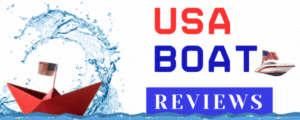Protecting Marine Turtles While Boating: Essential Tips for Safety
Boating is one of the best ways to enjoy the water, whether you’re out for a relaxing cruise, fishing with friends, or exploring coastal areas. But did you know that your boat trip could unintentionally harm one of the ocean’s most gentle and endangered creatures—marine turtles?
These ancient animals have roamed our oceans for millions of years, but today they face increasing threats from human activity, especially from boating. Let’s dive into how you can help protect marine turtles while out on the water.
Why Are Marine Turtles at Risk?
It might be hard to believe, but every time we take our boats out, we enter the turtles’ home. And unfortunately, this can bring some risks:
- Propeller strikes – Turtles often surface to breathe. If a driver isn’t careful, they may not see the turtle in time, leading to injury or death.
- Boat noise – Loud engine noises can scare turtles away from feeding or nesting areas.
- Pollution – Litter, especially plastic, often comes from boats and ends up in the water, where turtles may ingest it by mistake.
We can’t protect marine turtles unless we’re aware of how our actions affect them. So the next time you launch your boat, think of the sea not just as a playground, but as a place turtles call home.
Where You’re Most Likely to See Marine Turtles
Marine turtles are mostly found in warm, coastal waters. If you’re boating in places like:
- Florida
- Gulf of Mexico
- Caribbean Sea
- Parts of the Pacific Ocean, like Hawaii or California
Then there’s a good chance you’ll share the water with these graceful swimmers. Nesting season, which typically happens between March and October, is when boaters should be extra cautious, especially around beaches and inshore areas.
Fun Fact:
A female sea turtle comes ashore to lay her eggs, often returning to the very beach where she herself was born—talk about home sweet home!
How Can Boaters Help Protect Marine Turtles?
You’re probably wondering—what can I actually do to help? The good news is, protecting marine turtles while boating doesn’t require any special gear or training. Here are some simple but effective steps you can take:
1. Slow Down in Turtle Zones
Just like speed limits protect pedestrians on the road, slowing down in certain areas protects sea life. Areas marked as “Turtle Zones” usually signal habitats with frequent turtle activity. By reducing your speed, you give yourself more time to spot and avoid turtles.
2. Always Stay Alert
Keep your eyes peeled, especially in calm, shallow waters where turtles often swim near the surface. If you spot a turtle, cut your speed immediately and steer clear—ideally by at least 50 feet.
3. Avoid Anchoring Near Seagrass Beds
Turtles love snacking on seagrass. Try not to drop anchor in these areas, as it can damage feeding grounds. Instead, look for sandy or designated anchoring spots.
4. Don’t Litter, Even Accidentally
Plastic bags, fishing lines, and six-pack rings often end up in the ocean due to carelessness. Marine turtles often mistake plastic for jellyfish (one of their favorite treats). Take a moment to secure all trash on board and dispose of it responsibly once onshore.
5. Use Turtle-Friendly Lighting
If you enjoy nighttime boating or dockside activities, reduce light pollution. Bright lights near nesting beaches can disorient hatchlings trying to find the ocean. Opt for red or amber lighting when possible—they’re less confusing to turtles.
6. Report Injured or Stranded Turtles
If you find a turtle washed ashore, trapped in debris, or injured near your boat, contact the local wildlife agency or coast guard. Reporting these cases can save a life, and marine rescue teams are trained to handle them properly.
How This Affects You as a Boater
Protecting marine turtles isn’t just good for the environment—it helps preserve the very waters we love to explore. Here’s how it benefits you:
- Healthier ecosystems – Turtles play a key role in maintaining the balance of marine habitats.
- More marine life sightings – Protecting one species helps many. Healthier waters mean more fish, birds, and plant life.
- Fewer boating restrictions – Responsible boating helps avoid new laws or bans on watercraft use during turtle nesting season.
My Personal Experience Spotting Turtles
Last summer, I was cruising with friends off the coast of Sarasota, Florida. We slowed near the mangroves when suddenly someone pointed out a smooth, dark shell breaking the surface. It was a loggerhead sea turtle! We all sat in silence, watching as it gently paddled, took a breath, and dipped back below. That brief moment stuck with me—it was a reminder that we’re not alone out there.
Boater’s Checklist for Turtle Safety
Before launching your boat, make this part of your routine:
- Check your speed zones.
-
Scan the water for turtles—especially in shallow or calm areas.
- Secure all trash and gear.
- Use turtle-friendly lighting when boating at night.
- Know how to report harmed or stranded turtles in your area.
Final Thoughts: Let’s Share the Water
Protecting marine turtles is a team effort—and boaters are an important part of that team. A few small changes in our behavior can make a big difference for sea turtles and the ocean overall. Whether you’re on a jet ski, a fishing boat, or a sailboat, remember: turtles are part of the ocean’s story. Let’s help keep that story going for generations to come.
So next time you set sail, look out for those flippers and shells. After all, being a responsible boater means being a good neighbor to all marine life.
Ready to Do Your Part?
Stay informed and spread the word. Share this post with your boating buddies and help make the water a safer place for everyone!







